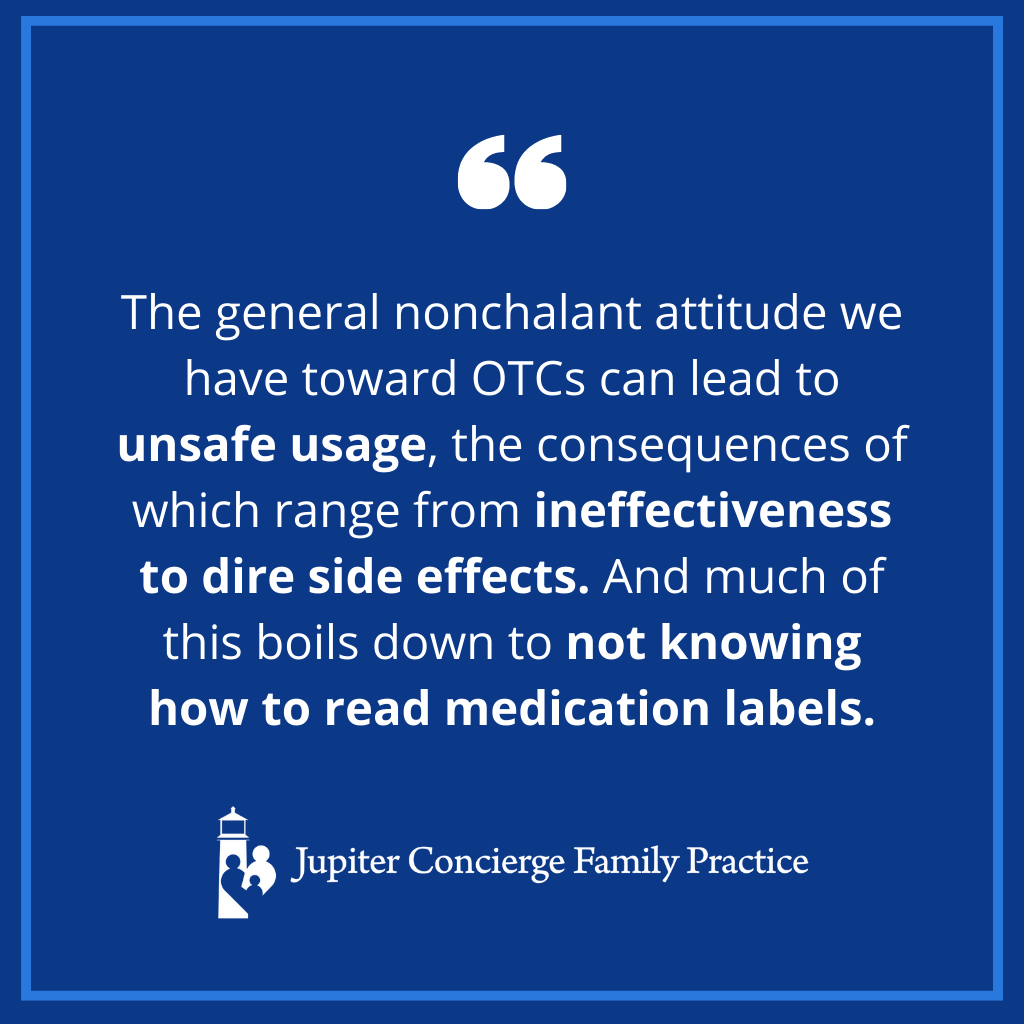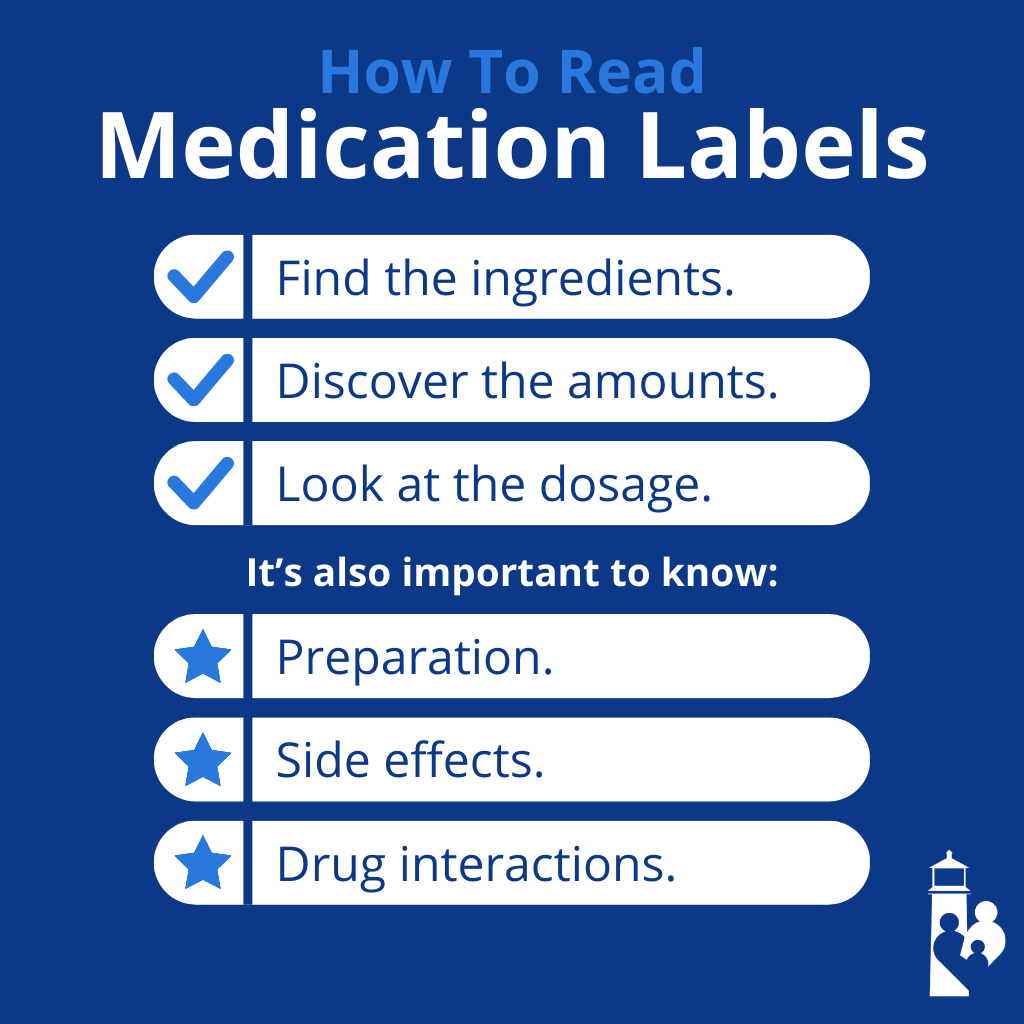
Nearly nine out of ten adults in the U.S. regularly self-medicate with over-the-counter drugs.
Over-the-counter (OTC) medications are everywhere: pharmacies, gas stations, grocery stores, hotels, and most other places people are. Given how much we use them, you might think we’d all be pros in how to read medication labels.
Not so.
Such ubiquitous exposure to OTCs can make these medicines seem like, well, not “real” medicine. This is false. OTCs are unequivocally medications.
Though dosed differently — OTCs have lower recommended dosages than correlated prescription drugs — there’s no substantive difference between OTCs and prescriptions. For example, the ibuprofen hospitals give patients is exactly what’s in the Advil you buy at your local drugstore.
The general nonchalant attitude we have toward OTCs can lead to unsafe usage, the consequences of which range from ineffectiveness to dire side effects. And much of this boils down to not knowing how to read medication labels.
You might overdose or underdose, or you might inadvertently take something you’re allergic to. Similarly, an OTC could adversely react with your prescription medications.
Many OTCs blend multiple medicines to achieve targeted outcomes. You need only walk down the aisle at CVS to see, for example, all the variations of Sudafed.
For a deeper look at what I mean, here’s what Healthline says about Sudafed:
“Sudafed contains pseudoephedrine, while Sudafed PE contains phenylephrine. The drugs are also available in several combinations with other over-the-counter cough and cold medications.”
Clearly, “taking a Sudafed” — or any OTC — can mean more than one thing. Knowing what medicines are actually in an OTC is much more helpful than knowing a brand name.
Below, I’ll explain how to read medication labels so you can take your OTCs without worry.
How to Read Medication Labels
Step 1: Find the ingredients. The first step is to identify exactly what chemicals are in the medicine. Put your glasses on, pull back the label, and read it carefully.
This might seem obvious and simple, but don’t be surprised if it takes some time. Deciphering the label isn’t always easy.
Step 2. Discover the amounts. Find out how much of each ingredient is in the medication.
Step 3. Look at the dosage. The amounts of each ingredient listed may not apply to an individual pill. For example, if a bottle of vitamin C (yes, it’s important to check supplements, too) is listed as having 1,000 mg of ascorbic acid, but the dosage is listed as two pills, that means one pill only contains 500 mg of ascorbic acid — half the recommended amount.
Once you have this information, you’re on your way. But it’s also important to know the following:
- Preparation. How is the medicine prepared? Is it a capsule or a tablet? Is it quick release or extended release? Knowing this will help you make sure you’re taking a medicine in the way it’s meant to be taken, which affects outcomes like absorption and effectiveness.
- Side effects. What kinds of potential adverse reactions are associated with this medication?
- Drug interactions. Are there any substances that should not be taken with this medicine? Knowing this information will help you prevent adverse interactions with any other medications you’re taking.
How to Read Medication Labels: Final Thoughts
Whether you take OTCs regularly or periodically, know they’re just as significant as prescription drugs. Treat them as such.
When you talk to your doctor, be sure to provide detailed information about your OTC medications — what you’re taking and how often. Medicine that’s taken periodically has a different effect than medicine that’s taken regularly, so your doctor needs these details.
When in doubt, it’s best to give your doctor as much information as possible. Then you can let the medical professional weed out what’s important and what isn’t.


Dr. David Rosenberg
Dr. Rosenberg is a board-certified Family Physician. He received his medical degree from the University of Miami in 1988 and completed his residency in Family Medicine at The Washington Hospital in Washington, Pennsylvania in 1991. After practicing Emergency Medicine at Palm Beach Gardens Medical Center for two years, he started private practice in Jupiter, in 1993. He is an avid baseball fan and Beatles fanatic, since he was 8 years old. He has been married to his wife, Mary, since 1985 and has three grown children.
David completed additional studies at Mercer University, Macon, Georgia and obtained a BS in Chemistry in 1983.
“My interests include tennis, snow skiing, Pilates and self-development.”

